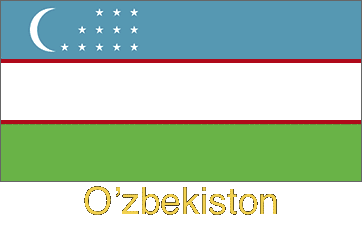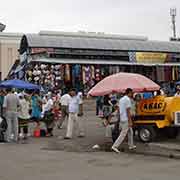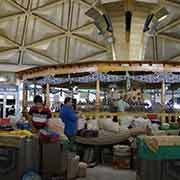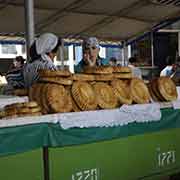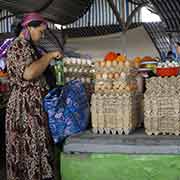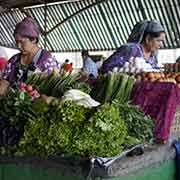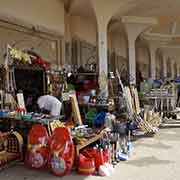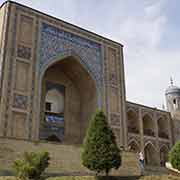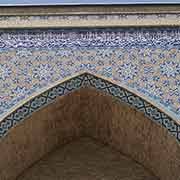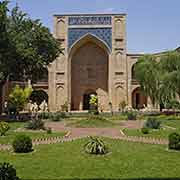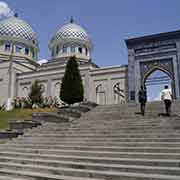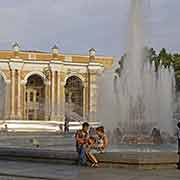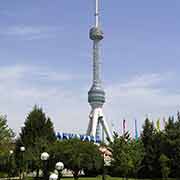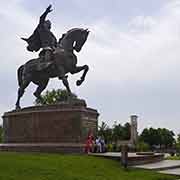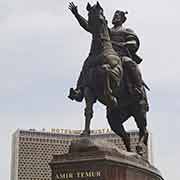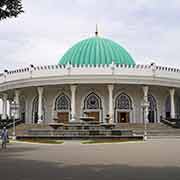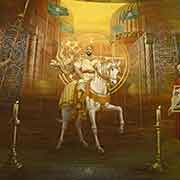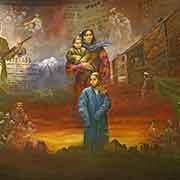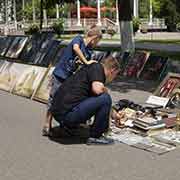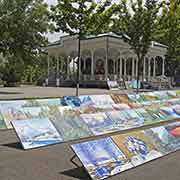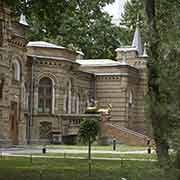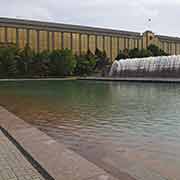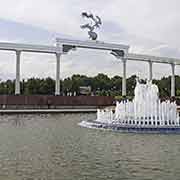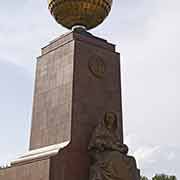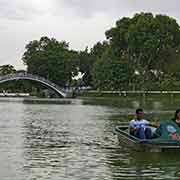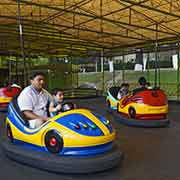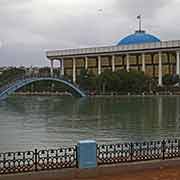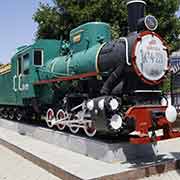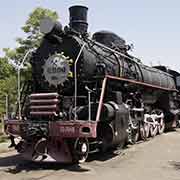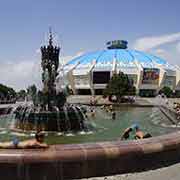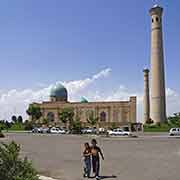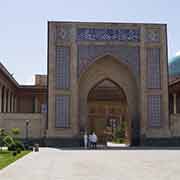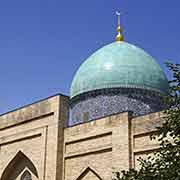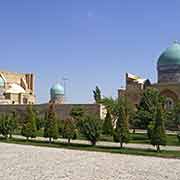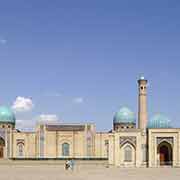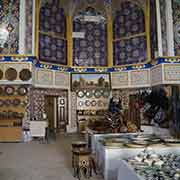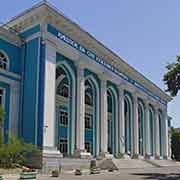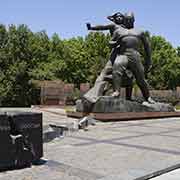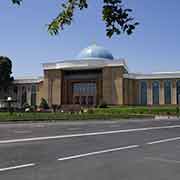Photos of Tashkent, capital of Uzbekistan
Tashkent, capital of Uzbekistan
Tashkent (Toshkent in Uzbek) is the capital and largest city of Uzbekistan; it is also the city with the largest population in Central Asia, over 2.3 million. It is a multi-ethnic city with ethnic Uzbeks in the majority. An ancient city, it celebrated its 2,200 years of written history in 2009. Tashkent was influenced by the Sogdian (ancient Iranian civilisation) and Turkic cultures in its early history, before Islam in the 8th century CE. In those days the city and its surroundings were known as Chach. During the time of Turkic Kara-Khanid rule in the 10th century, the present name started to come in use (“Tash” means “Stone”, hence “City of Stone”) came in use and after the 16th century “Chachkand” had evolved into Tashkand. Under Russian influence it became to be spelled as “Tashkent”; the Uzbek spelling is “Toshkent”.
you may then send it as a postcard if you wish.
The city was destroyed by the Mongols under Genghis Khan in 1219 an much of its population was lost, but it was rebuilt and its population and culture revived during Timurid and Shaybanid dynastic rule, between the 14th and 17th century. It became an important centre of culture, scholarship, culture and trade along the Silk Road. At the beginning of the 19th century the independent city-state was considered the richest city in Central Asia, with around 100,000 inhabitants. It was annexed by the Khanate of Kokand in 1809; during the first half of the 19th century it traded with Russia and prospered, although it was heavily taxed by Kokand.
In May 1865 Tashkent was attacked by Russian forces and after two days of heavy fighting and thousands of dead among the defenders (including the ruler of the Kikand Khanate, Alinqul) it was captured and two years later became the capital of Russian Turkestan. In Soviet times, Tashkent witnessed major growth and demographic changes due to forced deportations from throughout the Soviet Union and industries were set up in the 1920s and 1930s; many scientific and engineering facilities were established in the Soviet period. On 26 April 1966 much of the old city was destroyed by an earthquake. More than 300,000 residents were left homeless, because around 78,000 poorly engineered homes, mainly traditional adobe houses were destroyed. The city was rebuilt as a model Soviet city with wide streets, plazas, monuments and huge apartment blocks. When the Soviet Union collapsed in 1991, Tashkent was its fourth-largest city.
Now the capital of an independent Uzbekistan, many changes have taken place, Soviet-style icons replaced with new developments, emphasising its pre-Soviet culture. Timur (Amir Temur) is now its national hero, rather than Lenin and the city is known as a cultural capital of the Islamic world, with its numerous historic mosques and significant Islamic sites, including the Islamic University. New parks have been constructed, large hotels and shops, but the Soviet-style apartment blocks still remain as well. The Tashkent Metro, built after the earthquake of 1966, is fast and efficient, with beautifully ornate stations. It has presently three lines and extensions are planned.


